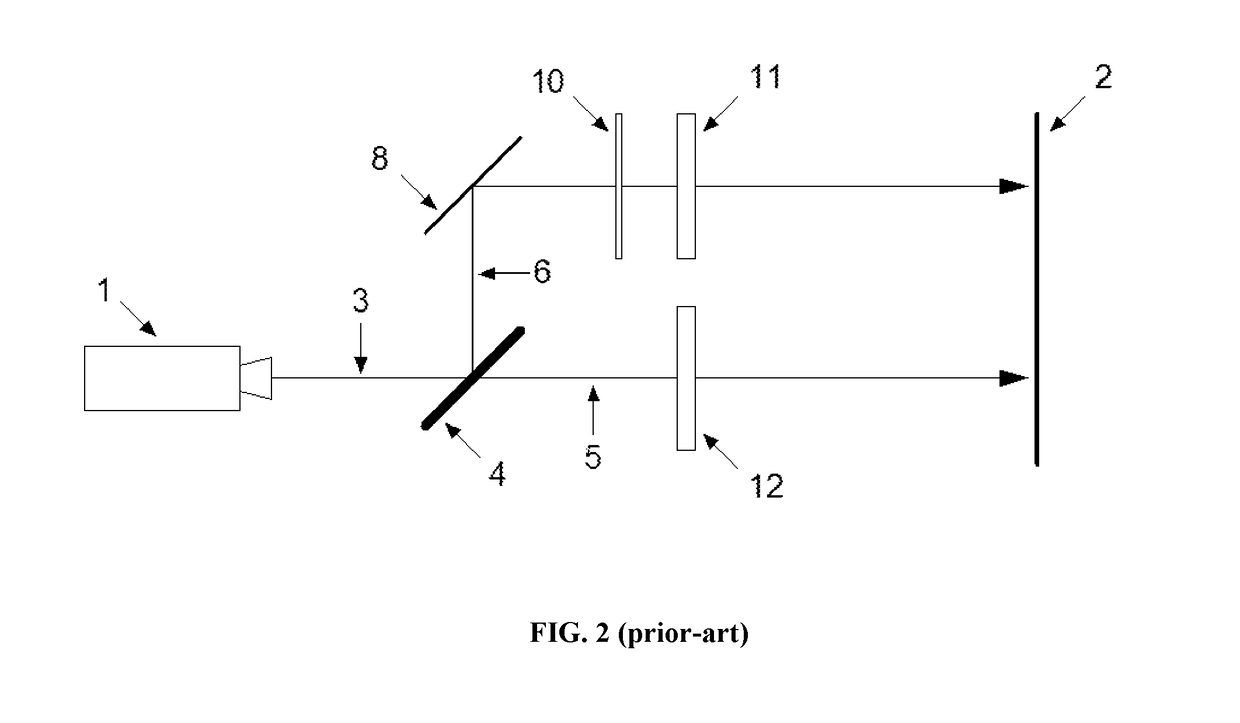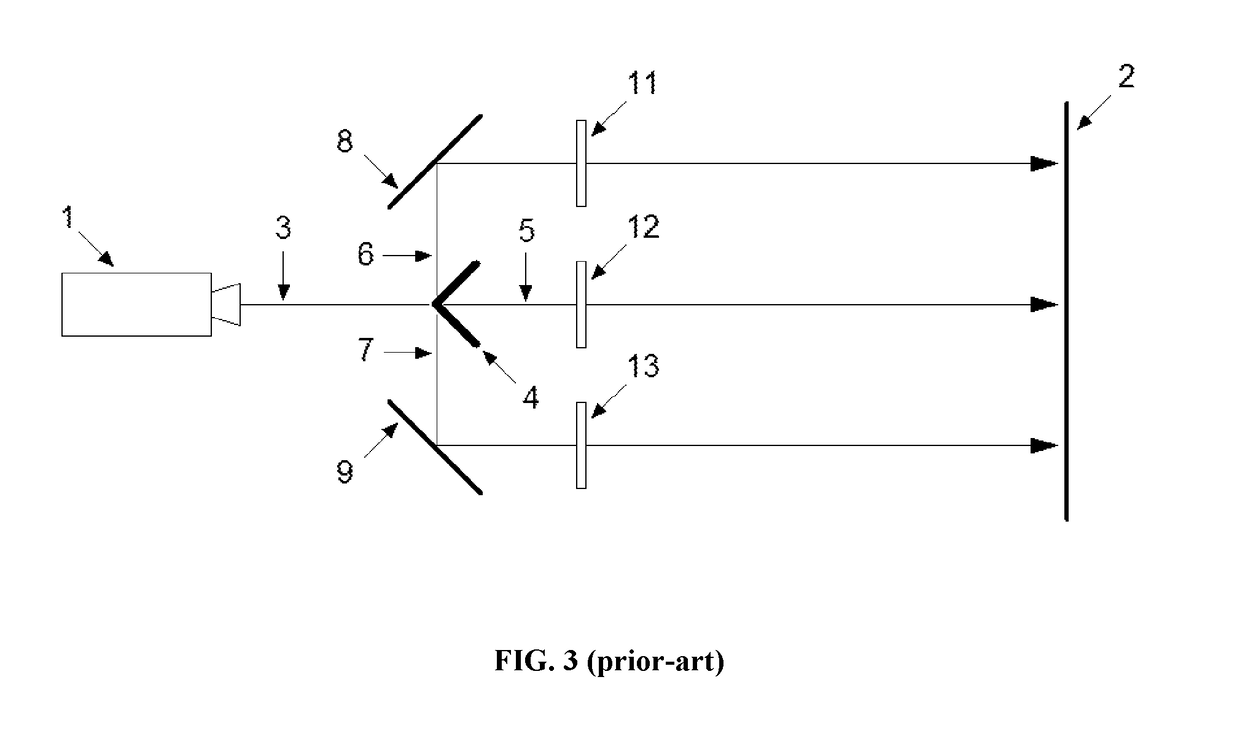Stereoscopic three dimensional projection system using elliptical polarization
- Summary
- Abstract
- Description
- Claims
- Application Information
AI Technical Summary
Benefits of technology
Problems solved by technology
Method used
Image
Examples
Embodiment Construction
[0033]FIG. 1 shows a stereoscopic 3d projection system based on a single image-beam architecture according to the state-of-the-art where a polarization modulator 12 comprising a stack of one or more liquid crystal elements (not shown) is placed directly in-front of the lens of a projector 1, such as a 3-chip DLP digital cinema projector or otherwise.
[0034]The projector 1 generates an incident image-beam 3 comprising a succession of alternate left and right-eye images at high frequency of typically 144 Hz and said polarization modulator 12 is arranged so as to impart a first circular polarization state to all left-eye images and a second circular polarization state to all right-eye images, with said first and second circular polarization states being mutually orthogonal.
[0035]Thereafter, said left and right-eye images are focused onto the surface of a polarization-preserving projection-screen 2 such as a silver-screen or otherwise, thereby enabling the viewing of time-multiplexed ste...
PUM
 Login to View More
Login to View More Abstract
Description
Claims
Application Information
 Login to View More
Login to View More - R&D
- Intellectual Property
- Life Sciences
- Materials
- Tech Scout
- Unparalleled Data Quality
- Higher Quality Content
- 60% Fewer Hallucinations
Browse by: Latest US Patents, China's latest patents, Technical Efficacy Thesaurus, Application Domain, Technology Topic, Popular Technical Reports.
© 2025 PatSnap. All rights reserved.Legal|Privacy policy|Modern Slavery Act Transparency Statement|Sitemap|About US| Contact US: help@patsnap.com



